16 days 15 nights
Daily Tour
1 person
Chinese, English, Espanol, Francais
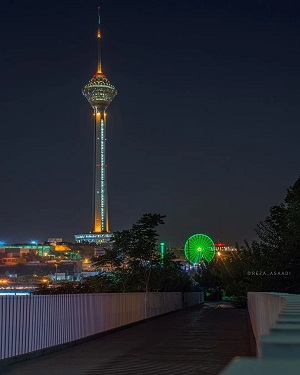
Welcome to Iran! As soon as you arrive at the airport, we’ll meet you and you’ll be taken to your hotel where to get some rest. Later, we’ll do some sightseeing in the modern parts of the city such as Milad Tower and Tabiat Bridge and enjoy the nightlife of the capital.
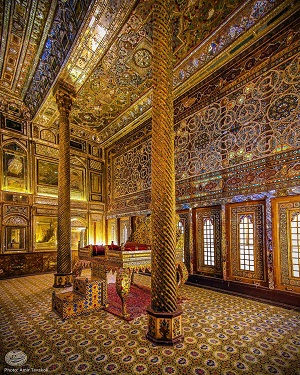
In the morning, we’ll set out for sightseeing in Tehran. We’ll be visiting Golestan Palace, this amazing UNESCO World Heritage and National Jewels Treasury which will blow your mind! We will also visit the National Museum in Tehran which identifies Iran. In the afternoon we will visit Tabiat Bridge as well and see this modern architecture and maybe grab a cup of coffee over there! O/N Tehran
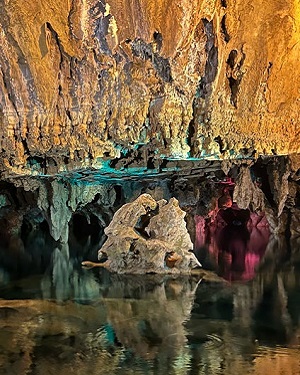
After having breakfast we will drive towards Hamadan , on the way we will visit Ali Sadr a wonderful water cave from the Jurassic period, located at an altitude of 2,100 m above sea level. O/N Hamadan
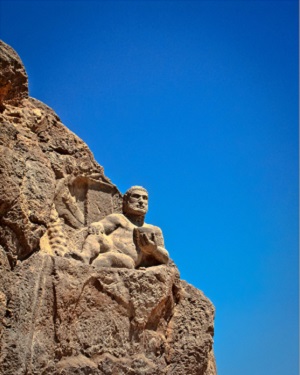
Today we will visit the most important buildings of the city, called Hegmatane: the mausoleum of the "Prince of Scholars" from the 10th / 11th century - Avicenna, who had a great influence on European science, especially medicine; a sacred place for Jews - the mausoleum of Esther and Mordechai, whose story related to the history of Persia is told in the biblical Book of Esther. A moment of breath under a waterfall in the beautiful valley of Abbas Abad , where for the first time we will meet the cuneiform script of ancient Persia, the inscriptions of the kings from the 6th / 5th century BC, placed in a place called Ganj Nameh ("Book of Treasures"). On the way to the city of Kermanshah , a visit to the former temple of the goddess of fresh waters - Anahita in Kangavar, stop at Behistun Inscription , an important place in the history of Persia, where we will see Parthian Heracles (II century) and the autobiography of the greatest king of ancient Persia - Darius, carved in the rock. Visiting Taq Bostan , reliefs made in rock caves during the reign of the Sassanid dynasty (3rd-6th century). O/N Kermanshah
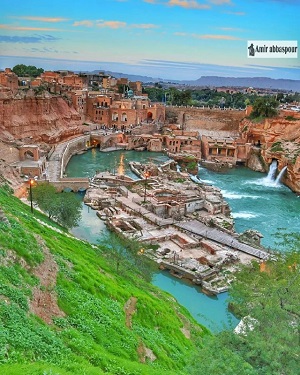
The beauty of the places we will visit today will amaze you. The mountain landscape of Luristan, past deep gorges and rugged mountain peaks to Shushtar on the Karun River, are among them. Shushtar is The must-see city that is said to be as old as history And that is probably the case, because the settlement already existed in Elamite times and was part of the Persian Royal Road, which connected the Elamite capital Susa (Shush) with the Achaemenid Persepolis. Shushtar irrigation system is one of the Shushtar's attractions, which was included in the UNESCO World Heritage List In 2009. O/N Shushtar
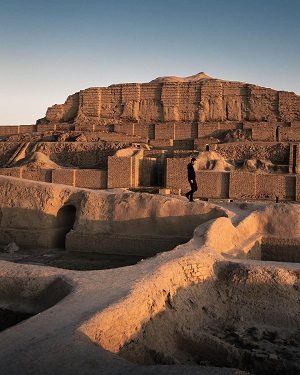
Immerse yourself in the history of Khuzestan and begin your search for clues in Chogha Zanbil. Today we will visit Duravantash or Chaghazanbil, which has an amazing temple in its heart and is the first historical monument of Iran that has been registered in the UNESCO World Heritage List. The area of Chaghazanbil is actually a city left over from the Elamite period, which has an area of 100 hectares. Chaghazanbil Ziggurat or Chaghazanbil Temple is an appropriate, amazing, landmark and the most important remaining building of this ancient city. We continue to Susa, one of the oldest urban settlements in the world and also a UNESCO World Heritage Site. In this city, we will visit one of the religious and historical attractions of Susa, the shrine of Prophet Daniel, the prophet of Bani Israel, who is from the tribe of Judah and his descendants to Prophet Jacob. Prophet Daniel was taken captive along with other Jews in the seventh century BC and came to Susa. Then we will visit the ruins of the great portico called Apadana. This palace is one of the most magnificent palaces in the world, which is made of clay and its columns are made of stone. O/N Ahwaz
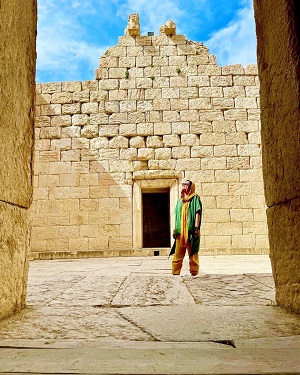
Today's plan takes you to the south of Iran, to the province of Fars and the heart of the Achaemenid Empire. On the way you will visit the remains of the Sasanian residence city of Bishapur. The city of Bishapur was one of the most important and prosperous cities during the Sasanian rule. It is interesting to know that the history of the construction of this city is completely carved in stone and has remained intact. This city was built based on Greek architecture in the form of four gates and two streets that intersect each other and finally reach the city gates. In the late afternoon we will reach to Shiraz. O/N Shiraz
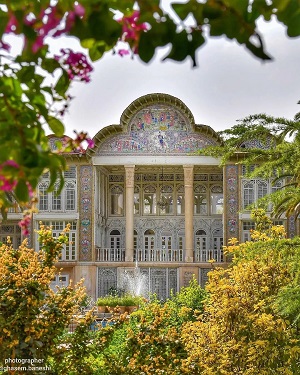
On your tour of discovery through Shiraz you will visit the Bagh-e Naranjestan or Garden of the Orange Trees. This building is one of the mansions of Qajar period and it is called by this name because of the abundance of orange trees. Afterwards, we will visit Karimkhani citadel, Which is a famous building located in the center of Shiraz and is one of the magnificent works of the Zandiyeh period. Visit Vakil Bazaar with its handicraft and antique shops is worth seeing. Now it's time to taste Shirazi Falodeh, the traditional Persian dessert, which according to legend is said to have been the very first ice cream. In the evening you will first visit the Hafiz mausoleum. His poetry and freedom of thought were deeply admired by Goethe. You can then admire the beautifully illuminated Shah Cheragh sanctuary from the outside. If we still have time , we recommend that you take a look at the Vakil Mosque, which is well worth seeing. Vakil Mosque is located in the western part of Vakil Bazaar, which was built by Karim Khan Zand during the reign of Zandiyeh. The design of the Vakil mosque is a two-bay design and has two southern and eastern bays, both of which have stunning architecture. O/N Shiraz
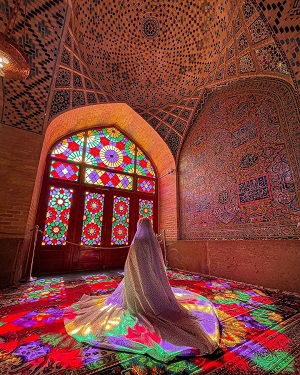
In the morning you will visit the impressive play of colors in the Nasir-ol-Molk Mosque. The best time to visit Nasir al-Mulk Mosque and watch the play of light and color is from 8 to 10 o'clock. During this interval, you can take the best photos of the lovely nave of the mosque. Then the time has come! You are approaching the long-awaited icing on the cake of this trip: Persepolis, the UNESCO World Heritage Site is arguably the most impressive historical site in Iran. Countless architects, artists, craftsmen, workers, women and men were involved in the construction of this magnificent building, who, in addition to receiving salaries, also benefited from labor insurance benefits. After a detailed tour, drive to the not far away necropolis of the Achaemenid kings Naqsch-e Rostam. Naqsh Rostam is an ancient site that includes a huge stone slab with historical relics from the three historical periods of the Elamites, Achaemenids and Sasanians. Back in Shiraz, visit a local family who will welcome you with delicious, traditional Iranian food. An ideal place to end an exciting day. O/N Shiraz
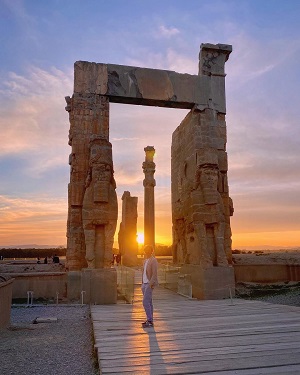
Today you drive towards Yazd. On the way visit Pasargadae. The Pasargadae collection in Shiraz is one of the works left over from the Achaemenid period which is a UNESCO World Heritage Site. According to travel writers, the ancient complex of Pasargadae Shiraz had many palaces and gardens in addition to the tomb of Cyrus, which have been destroyed today. Arrived in Yazd, visit the Amir Chakhmaq complex, the symbol of the city. O/N Yazd
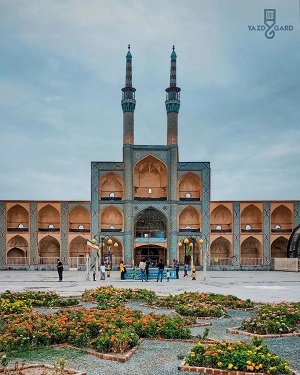
Today you stay in beautiful Yazd, known for its mud houses and intricate brocade fabrics. You will first visit the famous Silence Towers. Out of respect for the earth, the Zoroastrians did not bury their dead, but deposited them in burial towers to be eaten by vultures and crows. The remaining bones were then collected and buried in houses. Below the towers you can see the modern Zoroastrian cemetery, because this burial method is forbidden today. Then visit the new fire temple. This is where the Zoroastrian community holds their services. The fire burning inside is a symbol of the presence of God and is said to have been burning in the province of Fars as early as 500 AD. The Jame Mosque With its beautiful blue mosaic tiles, the mosque is one of the most magnificent in the country. Afterwards you will walk through the Zoroastrian quarter and learn more about life and religion in a Zoroastrian family in the Kasra house. Sunset over the rooftops of Yazd! Enjoy the great ambience and the view of the city from one of the many roof terraces. In the evening there is still a visit to the Zurkhaneh, a House of Strength. Here you can watch the traditional martial arts and weight training exercises of the Iranian men who train here every evening. A different kind of showdown, you don't see that very often. O/N Yazd
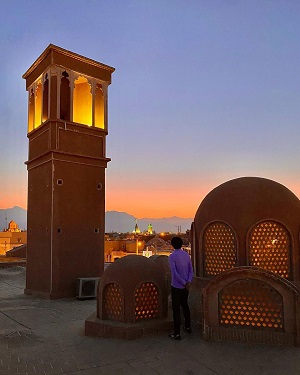
Isfahan. Known for its carpets, printed fabrics and miniature paintings, the city is reminiscent of the tales of the Arabian Nights in many ways. After breakfast you will be on your way. Your first stop is the Narin Qaleh Fortress in Meybod and the nearby caravanserai. On the onward journey you will visit the carpet town of Nain with the Jame Mosque. Isfahan by night - let's go! You will walk past the Khaju Bridge and the 33 Arches Bridge which are beautifully illuminated in the evening. O/N Isfahan
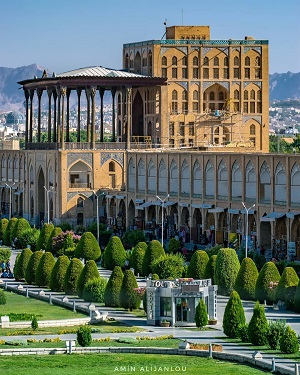
You start your exploration tour in the Chehel Sotoun Palace, also known as the 40 Pillar Palace, with its beautiful garden. We continue to Imam Square, a UNESCO World Heritage Site and also known by locals as the Image of the World. At 510 by 160 meters, it is the largest after Beijing's Tian'anmen Square and one of the most beautiful squares in the world. Here are impressive sights such as the Imam Mosque, the Lotfollah Mosque and the Ali Qapu Palace. Stroll through the bazaar at Imam Square and visit a workshop for fabric printing and miniature painting. If your feet are tired, take a little break in Imam Square - a unique experience. If you want, you can quickly get into conversation with the friendly Iranians. O/N Isfahan
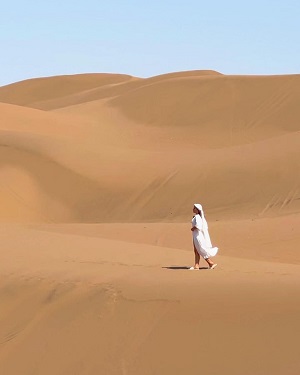
Before leaving Isfahan, visit the imposing Jame Mosque and the Vank Cathedral. The Friday Mosque of Isfahan, as the Jame Mosque is also known, is considered one of the most beautiful structures in the city and is one of the oldest surviving mosques in the country. Then follow in Armenian footsteps and visit the Vank Cathedral with its Persian, Byzantine and European architectural elements. Almost inconspicuous from the outside, a magnificent room awaits you inside with artistic paintings and carvings as well as precious tiles, that decorate the walls. Very close by is Jolfa Square, a small square in the Armenian Quarter. Young and old meet here to chat and there is a peaceful atmosphere. Perfect for a break in one of the traditional tea houses. Then it is time to finally say goodbye to Isfahan. You continue to Matinabad on the edge of the Dasht-e Kavir desert. Your accommodation is already waiting for you. Matinabad Desert Eco-Camp: Matinabad Desert Eco-Camp is located southeast of Kashan on the edge of the Dasht-e Kavir Desert. The main building where you stay overnight is built in the style of a caravanserai.
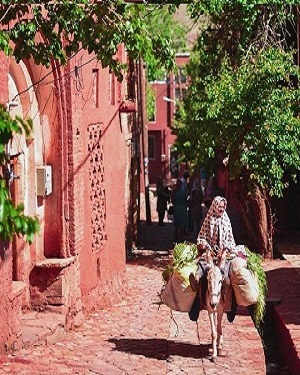
Today you will bake your own traditional Iranian bread for the picnic. Later drive to the green desert city of Natanz and visit the Archaeological Museum and the Friday Mosque. Then you stop in the picturesque mountain village of Abyaneh, whose red-brown adobe houses stretch in steps along a hillside. O/N Kashan
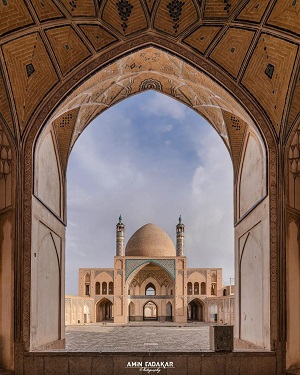
Continue to Kashan, known for its carpets, pomegranates and rose water. The Fin Garden near the village of the same name, a few kilometers southwest of Kashan, contains architectural elements from the Safavid, Zand and Qajar periods. With its numerous fountains, pools, watercourses and old trees, it is one of the most famous and beautiful gardens in Iran. Stroll through what is now a UNESCO World Heritage Site and cool your feet in the pools. Your next stop is the Tabatabai House. The historical house of the Tabatabai is considered as the bride of the historical houses of Iran, including the historical buildings and houses of Kashan. This house was built in the Qajar period by a person named "Hajj Seyyed Jafar Tabatabai Natanzi", one of the Natanzi merchants living in Kashan in Sultan Amir Ahmad neighborhood, and for this reason it is known as the Tabatabai House.
Iran is one of the safest countries in Iran with the kindest people and welcoming citizens. Even for solo travelers, there’s absolutely nothing to worry about!
All tours are performed for small groups and large groups. The number of the travelers can vary from 2 to 8
Based on the number of the travelers, the transportation varies from cars to vans and buses.
All tours include the essential traveler’s package, domestic tickets, breakfasts, accommodation and guide as well as some free optional activities.
Iran is a four-seasonal country but the best still, for a more pleasant experience you can travel in spring, fall or the end of summer.
Since international credit cards don’t work in Iran, you can either carry a lot of cash or get a Persian bank car which will be included on our essential traveler’s package.
Each night will be spent in comfortable, 4-star hotels with the best facilities and amenities.
16
Enter Persia’s essential traveler’s package includes visa, insurance, sim card, arrival and departure transfers, and a Persian bank card in case you want to avoid carrying a lot of cash.
On this tour, you'll visit 5 most famous and touristic cities of Iran with all their attractions.
All tours in Enter Persia can be tailor-made in which you can spend the number of days you require and visit more places. You can also experience nomad stay, culinary lessons and Persian deserts.
Very interesting info!Perfect just what I was searching for!! Also visit my page :: GregA